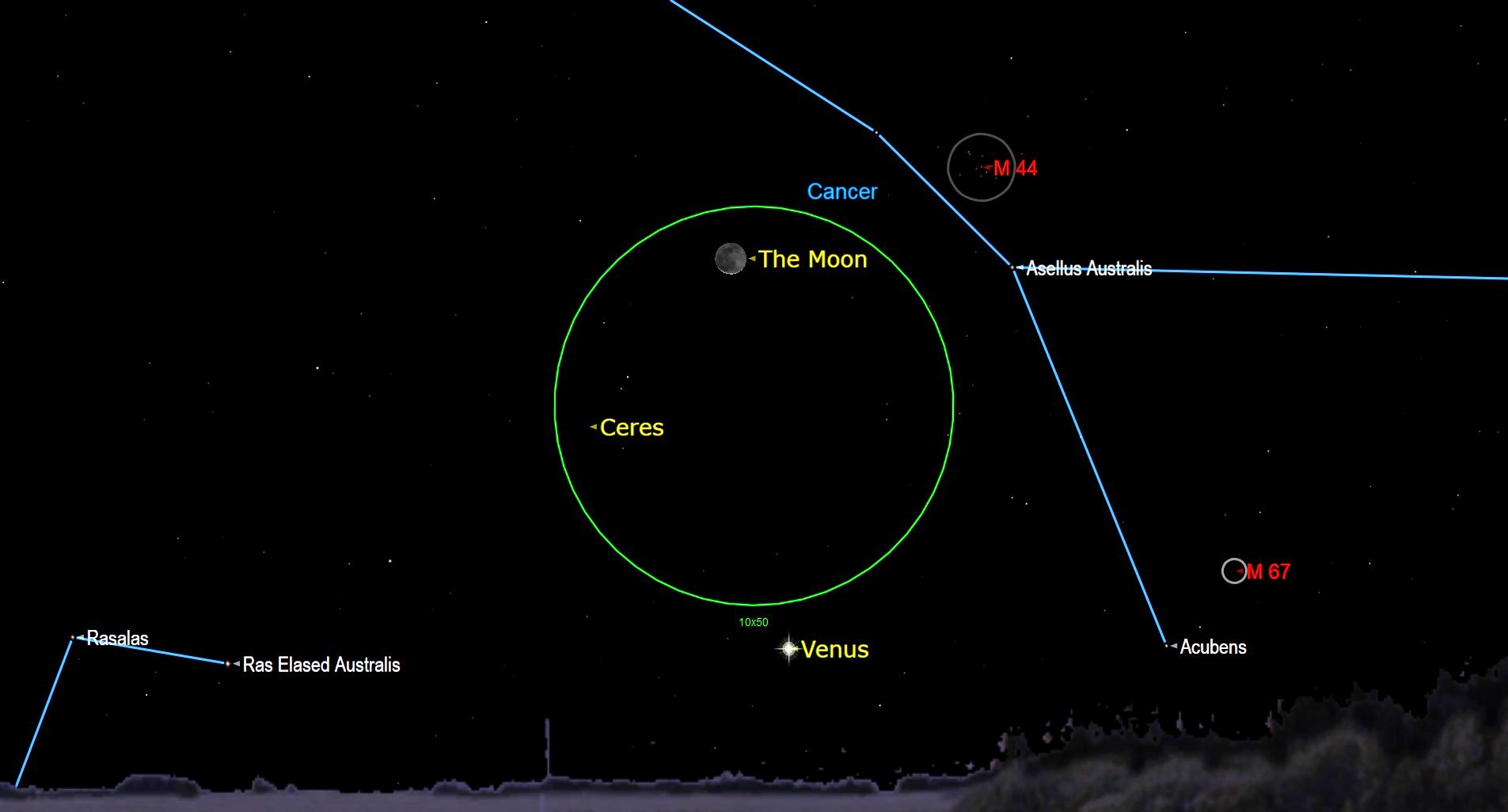See the old moon and Venus conjunction tonight
About an hour and a half before sunset Thursday (Aug. 25), Venus will shine close to the old moon in the early-evening sky.

About an hour and a half before sunset on Thursday (Aug. 25), Venus will shine close to the old moon in the early-evening sky.
The waning crescent moon will pass a mere 4°17' to the north of the bright planet Venus. This close encounter, or conjunction, occurs at 4:58 p.m. EDT (20:58 GMT), when the two objects share the same right ascension or the same ecliptic longitude, according to In-the-Sky.org.
The moon is currently shining at a magnitude of -8.4, while Venus shines with a magnitude of -3.9. Despite their close encounter, the pair will be too widely separated to fit within the field of view of a telescope. However, they will be visible to the naked eye or through a pair of binoculars.
Related: Night sky, August 2022: What you can see tonight [maps]
The pair is currently located in the constellation Cancer, joined by the dwarf planet Ceres, which appears smack dab between the moon and Venus.

Looking for a telescope to see Saturn? We recommend the Celestron Astro Fi 102 as the top pick in our best beginner's telescope guide.
While the moon's close encounter of Venus officially occurs at 4:58 p.m. EDT (2058 GMT) this evening, the pair was visible close together this morning in the predawn sky at 4:56 a.m. EDT (0856 GMT), about 1 hour and 17 minutes before sunrise.
Unfortunately, the pair rose only 9° above the eastern horizon before fading to the rising sun, making the two objects difficult to spot in the predawn sky. And, at 28 days old, the waning crescent moon appears only 4% lit.
Breaking space news, the latest updates on rocket launches, skywatching events and more!
If you miss this close encounter of Venus and the moon, you'll have another chance to catch the pair when they meet up again before the end of the year on Dec. 25.
If you're hoping to capture a good photo of the conjunction, or another upcoming skywatching event, check out our guide for best cameras for astrophotography and best lenses for astrophotography. You can also check out our guide for the best binoculars to spot both the moon and Venus in the sky.
Follow Samantha Mathewson on Twitter @Sam_Ashley13. Follow us on Twitter @Spacedotcom or on Facebook.

Samantha Mathewson joined Space.com as an intern in the summer of 2016. She received a B.A. in Journalism and Environmental Science at the University of New Haven, in Connecticut. Previously, her work has been published in Nature World News. When not writing or reading about science, Samantha enjoys traveling to new places and taking photos! You can follow her on Twitter @Sam_Ashley13.
